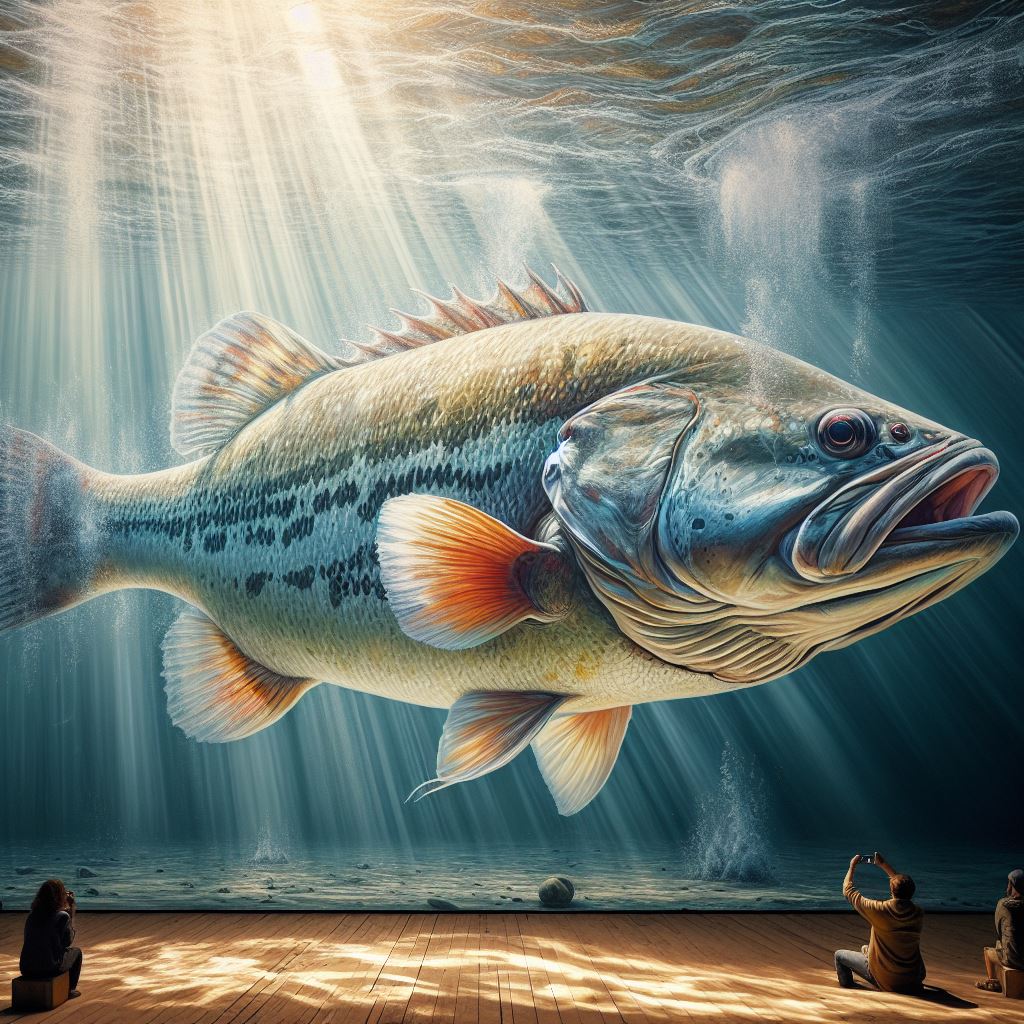
Master the Basics: Bass Fishing for Beginners Guide
On December 22, 2023 by fishingamericatodayWelcome to our comprehensive guide on bass fishing for beginners. If you’re new to the exciting world of bass fishing, you’ve come to the right place. In this guide, we will provide you with valuable tips and techniques to help you get started on your bass fishing journey.
Whether you’re a newbie angler or just looking to brush up on your skills, we will cover everything you need to know about bass fishing. From basic bass fishing skills to essential equipment, we’ve got you covered.
So if you’re ready to dive into the exciting world of bass fishing, let’s get started with our beginner’s guide to bass fishing. Get ready to reel in some big catches!
Essential Equipment for Beginners in Bass Fishing
When it comes to bass fishing, having the right equipment is essential for beginners. Investing in the right gear will not only make your fishing experience more enjoyable but also increase your chances of success on the water. Here are a few must-have items for beginner bass fishermen:
- Polarized Glasses: Protect your eyes from the sun’s harmful rays and enhance your ability to see bass beneath the water’s surface.
- UV Performance Fishing Shirts: Keep cool on hot days with shirts that offer built-in sun protection and moisture-wicking properties.
- Rod and Reel Combo: Choose a decent combo that suits your fishing location and the size of the bass. Spinning reels and baitcasting reels, paired with different types of rods, are suitable for different situations.
These are just a few of the essential items that beginners should consider when gearing up for bass fishing. The right equipment can make a world of difference in your fishing success.
Table: Essential Gear for Beginner Bass Fishing
| Item | Description |
|---|---|
| Polarized Glasses | Protects eyes from the sun’s rays and helps see bass under the water |
| UV Performance Fishing Shirts | Offers built-in sun protection and moisture-wicking properties to keep cool on hot days |
| Rod and Reel Combo | Choose a suitable combo based on fishing location and bass size. Spinning reels and baitcasting reels, paired with different types of rods, are suitable for different situations. |
With these essential gear items, beginners can have a solid foundation for their bass fishing adventures. Remember, investing in quality equipment will lead to a more enjoyable and successful fishing experience.
Tips for Fishing in Ponds and Canals
Bass fishing in ponds and canals can be a rewarding experience for beginners. These smaller bodies of water often provide ample opportunities to catch bass and hone your fishing skills. Here are some tips to help you make the most of your fishing outings:
Fishing Techniques
- Be Quiet and Stealthy: Bass have excellent eyesight, so it’s important to approach the water quietly and avoid making any sudden movements that could spook the fish.
- Cast Parallel to the Shore: Shallow areas near the shore are prime spots for bass to hide and prey on smaller fish. Casting parallel to the shore allows you to cover more water and increase your chances of catching bass.
- Use Spinnerbaits and Texas or Carolina Rigged Worms: These baits are effective in ponds and canals as they can help you locate fish around underwater structures. Spinnerbaits mimic baitfish, while Texas or Carolina rigged worms imitate bottom-dwelling creatures that bass feed on.
Best Places to Catch Bass
Ponds and canals offer a variety of places where bass like to hang out and feed. When fishing in these bodies of water, keep an eye out for the following locations:
| Location | Description |
|---|---|
| Shallow Vegetation | Bass often hide in areas with thick vegetation, such as lily pads or submerged grass. Target these areas by using weedless lures or topwater baits. |
| Underwater Structures | Look for structures like fallen trees, submerged logs, or docks. Bass like to use these structures as cover to ambush their prey. |
| Drop-offs and Channels | These areas provide depth changes, which can attract bass looking for an easy meal. Use deep diving crankbaits or jigs to explore these areas. |
Remember, fishing in ponds and canals requires patience and observation. Take the time to learn the behavior and feeding patterns of bass in these smaller bodies of water. Talking to experienced anglers or doing some research can provide valuable insights and help you improve your fishing skills. Happy fishing!
Strategies for Fishing in Big Lakes
Fishing in big lakes can be a thrilling experience for beginners, but it also presents unique challenges. To maximize your chances of success, it’s essential to have effective strategies in place. Here are some tips to help you make the most out of your bass fishing adventures in big lakes:
1. Adapt to Different Fishing Situations
Big lakes offer a variety of fishing environments, from thick vegetation to rocky or sandy shorelines. It’s crucial to be prepared with both a light and a heavy rod and reel combo. A beefier setup is necessary when fishing areas with dense vegetation, while a lighter combo is more suitable for rocky or sandy shorelines. By having the right equipment, you can easily adapt to different fishing situations and increase your chances of landing a bass.
2. Understand Bass Feeding Patterns
Bass in big lakes often feed at different depths depending on the time of day and water conditions. It’s important to understand their feeding patterns and adjust your bait choices accordingly. Crankbaits and spinnerbaits are effective for covering a large amount of water, allowing you to locate active feeding areas. Additionally, topwater lures can provide an exciting and action-packed experience when bass are feeding near the surface.
3. Locate Underwater Structures
Big lakes are home to various underwater structures where bass like to hide. These structures, such as submerged logs, weed mats, or rocky outcrops, serve as ideal ambush points for bass to prey on smaller fish. Take the time to identify these structures using fish finders, maps, or local knowledge. By targeting these areas, you can increase your chances of finding bass and enticing them to bite.
Remember, practice and experience are key to becoming a better bass angler. By applying these strategies and continuously honing your skills, you’ll be well on your way to mastering bass fishing in big lakes.

Techniques for Bass Fishing in Rivers
Bass fishing in rivers offers a unique set of challenges and requires specific techniques to increase your chances of success. Understanding the behavior of bass in river environments is crucial to effectively target and catch these elusive fish. Here are some beginner-friendly techniques to help you master bass fishing in rivers:
1. Presenting Baits Upstream
When fishing in rivers, it’s recommended to present your baits or lures from upstream. Bass often hide facing the current, using it to their advantage when ambushing their prey. By casting your bait upstream and allowing it to naturally drift towards the bass, you can mimic the movement of their potential food source, increasing your chances of enticing a strike.
2. Targeting Ambush Points
Rivers are dotted with various ambush points where bass like to hide and wait for their prey. These can include submerged logs, fallen trees, rock formations, and weed mats. By identifying these structures and casting your bait near them, you can trigger a reaction from bass that are lurking in these areas. Be patient and experiment with different retrieval techniques to find what works best.
3. Live Bait Presentation
Using live bait can be highly effective in river fishing, as the current naturally carries the bait downstream, making it appear more natural to the bass. Consider using live minnows, nightcrawlers, or crayfish as bait choices when targeting bass in rivers. Ensure you comply with local fishing regulations regarding the use of live bait and obtain the necessary license before your fishing trip.
Remember to adapt your techniques based on the specific river conditions, such as water flow, depth, and clarity. Exploring different sections of the river and seeking advice from local anglers can provide valuable insights and enhance your river fishing experience. By mastering these techniques and being patient, you can increase your chances of landing that prized bass in rivers.
Conclusion
Mastering the art of bass fishing requires a combination of knowledge, skills, and the right equipment. By following these tips for successful bass fishing, beginners can become better bass anglers and increase their chances of landing that prized catch.
One of the key elements to successful bass fishing is understanding the behavior of the fish. Pay attention to details such as water temperature, weather conditions, and the fish’s preferred habitat. By finding cover where the fish are and adapting to their behavior, you can greatly improve your chances of success.
Another important aspect of becoming a better bass angler is to be versatile. Different fishing locations and techniques require different approaches. Take the time to learn about the various techniques for fishing in ponds and canals, big lakes, and rivers. This will allow you to adapt your strategies to different situations and increase your chances of success.
Lastly, practice and patience are key. Becoming a skilled bass angler takes time and experience. Take the opportunity to learn from experienced anglers, do your research, and practice your skills. Pay attention to the small details, such as proper knot tying and bait selection. With persistence and dedication, you can become a successful bass angler and enjoy the thrill of reeling in those prized bass.
FAQ
What is the best time to catch bass?
The best time to catch bass is early in the morning or late in the afternoon.
What is a good bait for beginners to use?
A Texas rigged soft plastic worm, lizard, crayfish, or creature bait is an excellent bait for beginners to master.
What equipment do beginner bass fishermen need?
Beginner bass fishermen will need polarized glasses, UV performance fishing shirts, and a decent rod and reel combo.
Where are good locations for beginners to catch bass?
Ponds and canals are excellent locations for beginners to catch bass.
How should beginners approach bass fishing in ponds and canals?
Beginners should be quiet and stealthy when approaching the water and try casting parallel to the shore in shallow areas.
What are some techniques for fishing in big lakes?
Using both a light and a heavy rod and reel combo, understanding the depth at which bass are feeding, and using crankbaits and spinnerbaits are some techniques for fishing in big lakes.
How does fishing in rivers differ from other locations?
Fishing in rivers adds the element of current, which can influence fish behavior. It is recommended to present baits or lures from upstream and understand potential ambush points.
What should beginners keep in mind for bass fishing?
Beginners should pay attention to details such as knots, do proper research before heading out on a fishing trip, and be persistent and patient as success often comes with experience and practice.
Source Links
- https://shopkarls.com/blog/bass-fishing-tips-9-basics-anglers
- https://fishyourassoff.com/largemouth-bass-fishing-for-beginners.html
- https://www.takemefishing.org/how-to-fish/how-to-catch-fish/how-to-catch-bass/
Archives
Calendar
| S | M | T | W | T | F | S |
|---|---|---|---|---|---|---|
| 1 | 2 | |||||
| 3 | 4 | 5 | 6 | 7 | 8 | 9 |
| 10 | 11 | 12 | 13 | 14 | 15 | 16 |
| 17 | 18 | 19 | 20 | 21 | 22 | 23 |
| 24 | 25 | 26 | 27 | 28 | 29 | 30 |
| 31 | ||||||
